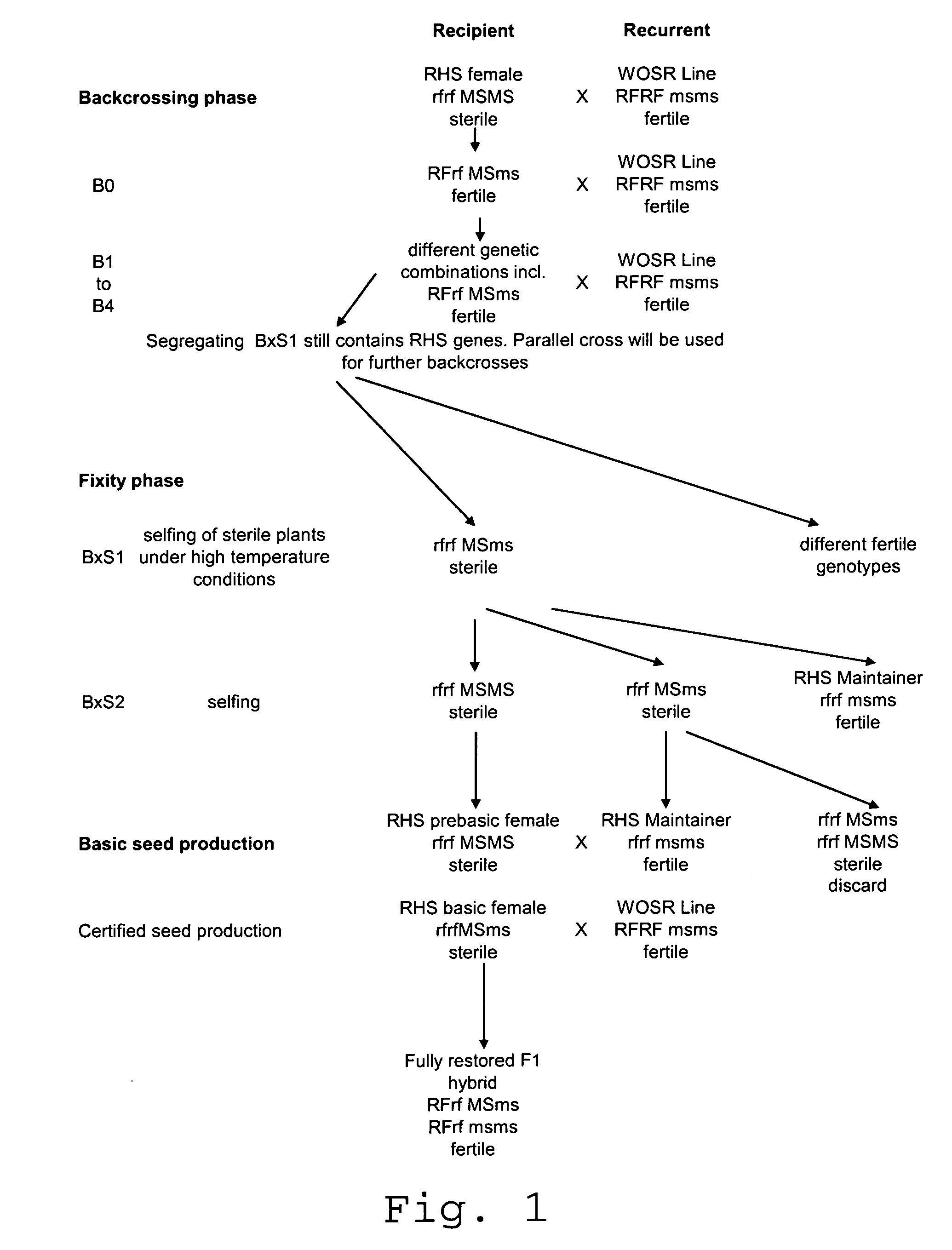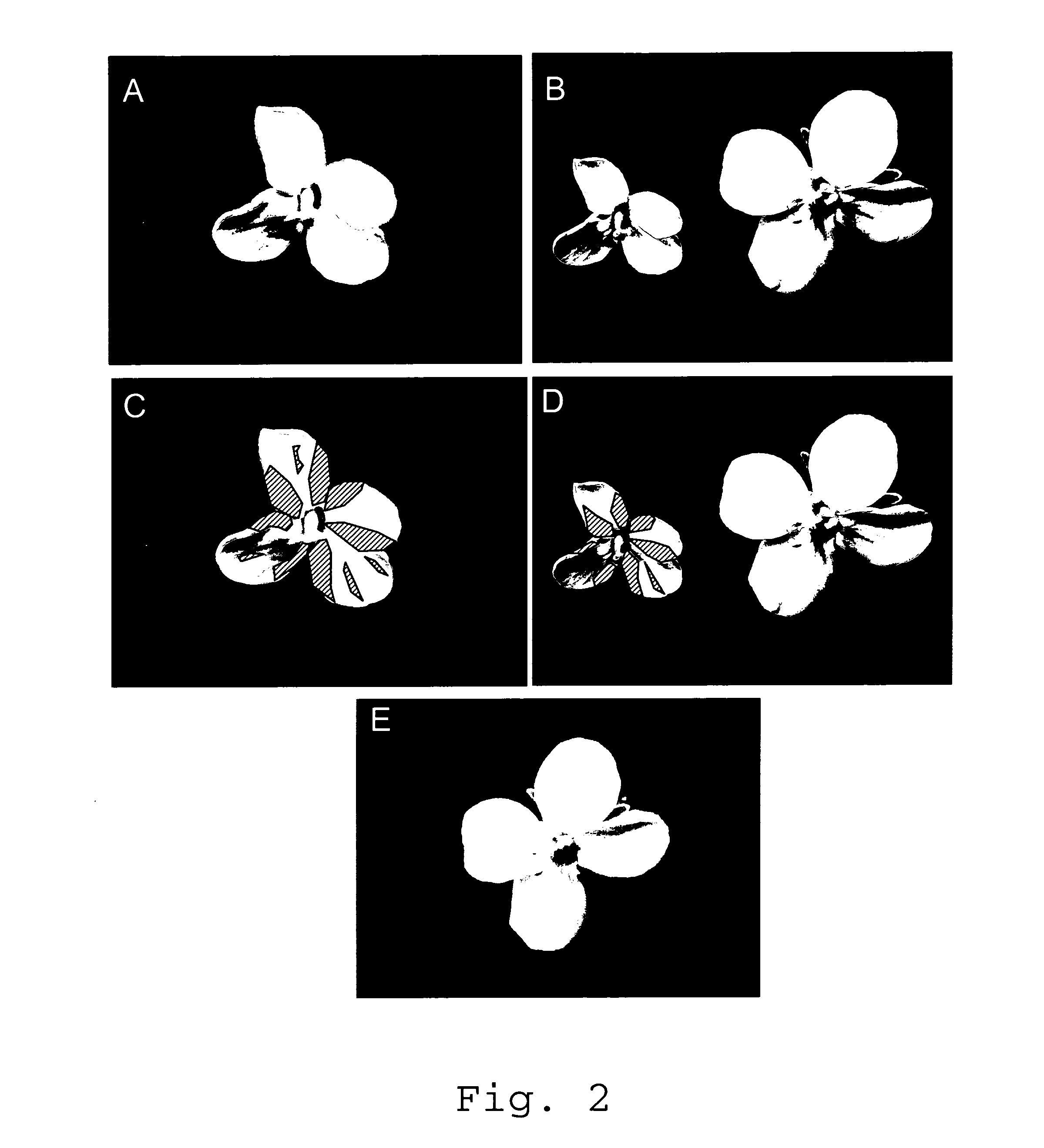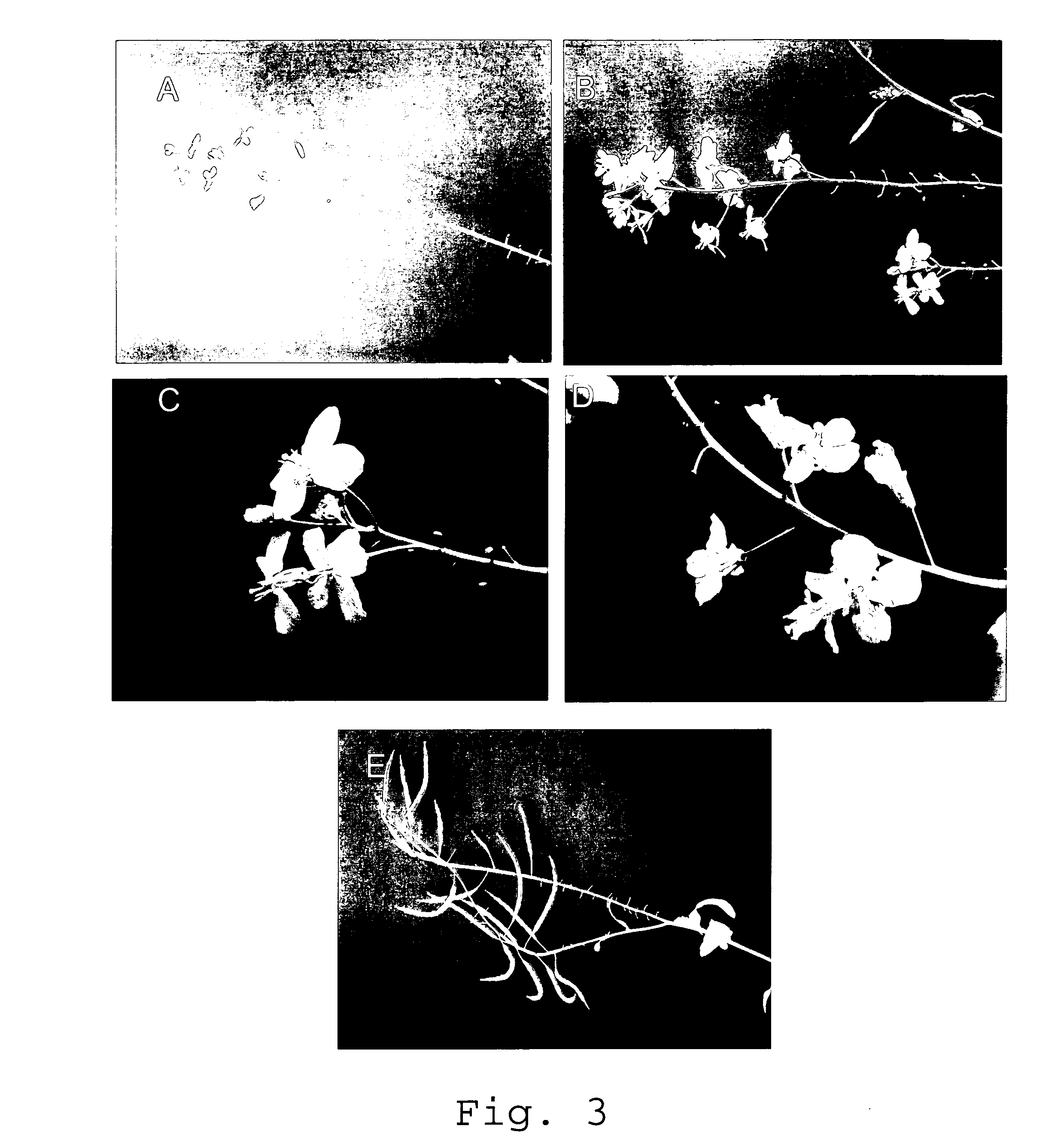New hybrid system for brassica napus
a hybrid system and brassica technology, applied in the field of nuclear conditional male sterility system, can solve the problems of affecting the acceptance of rapeseed meal for animal nutrition, and affecting the sterility of brassica napus
- Summary
- Abstract
- Description
- Claims
- Application Information
AI Technical Summary
Benefits of technology
Problems solved by technology
Method used
Image
Examples
example 1
GSL Analysis
[0694]The glucosinolate (GSL) content of the Brassica seeds is monitored throughout the breeding program. Glucosinolate content is given in μlmol / g of seed at 9% humidity. The glucosinolate analysis can be performed using state of the art technology such as, for example, HPLC or near-infrared reflectance spectroscopy (NIRS). Using the NIRS method, it is possible to analyze samples of undestroyed Brassica seed for their quality components oil, protein and glucosinolate.
[0695]The glucosinolate levels discussed herein are determined in accordance with two standard procedures, namely (1) high performance liquid chromatography (HPLC) as described in ISO 9167-1:1992(E) for quantification of total intact glucosinolates (“Rapeseed-Determination of glucosinolates content—Part 1: Method using high-performance liquid chromatography, International Organization for Standardization”, Geneva), and (2) gas-liquid chromatography for quantification of trimethylsilyl (TMS) derivatives of e...
example 2
Method for Determining Fatty Acid Profile
[0696]The fatty acid concentrations discussed herein are determined in accordance with a standard procedure wherein the oil is removed from the Brassica oilseeds by crushing and is extracted as fatty acid methyl esters following reaction with methanol and sodium methoxide. Next, the resulting ester is analyzed for fatty acid content by gas liquid chromatography using a capillary column which allows separation on the basis of the degree of unsaturation and chain length. This analysis procedure is described in the work of Daun et al. (1983), which is herein incorporated by reference.
example 3
Development of Homozygous Prebasic Male Sterile Lines
[0697]Male sterile Takagi germplasm Brassica napus plants were pollinated with pollen of the Brassica napus variety Zenith. The F1 progeny of this cross was male fertile. Plants of those were crossed in the greenhouse with male fertile plants of the variety Smart after hand emasculation. F1 plants were raised out of each plant's crossing seeds in the greenhouse. All plants showed a male fertile phenotype. Individual plants out of this population were selfed by isolation of single plants with plastic bags (Cryovac Crispac Beutel Super Micro Lochung 360×830 mm, Supplier: Baumann Saatzuchtbedarf D-74638 Waldenburg). F2 selfing descendants were tested in the greenhouse on male sterility / fertility. Eight of ten populations were fertile, two of ten populations showed segregation for sterility / fertility. Sterile plants from these populations were selfed under high temperature conditions as described below in Example 10. F3 populations of...
PUM
| Property | Measurement | Unit |
|---|---|---|
| Temperature | aaaaa | aaaaa |
| Temperature | aaaaa | aaaaa |
| Temperature | aaaaa | aaaaa |
Abstract
Description
Claims
Application Information
 Login to View More
Login to View More - R&D
- Intellectual Property
- Life Sciences
- Materials
- Tech Scout
- Unparalleled Data Quality
- Higher Quality Content
- 60% Fewer Hallucinations
Browse by: Latest US Patents, China's latest patents, Technical Efficacy Thesaurus, Application Domain, Technology Topic, Popular Technical Reports.
© 2025 PatSnap. All rights reserved.Legal|Privacy policy|Modern Slavery Act Transparency Statement|Sitemap|About US| Contact US: help@patsnap.com



